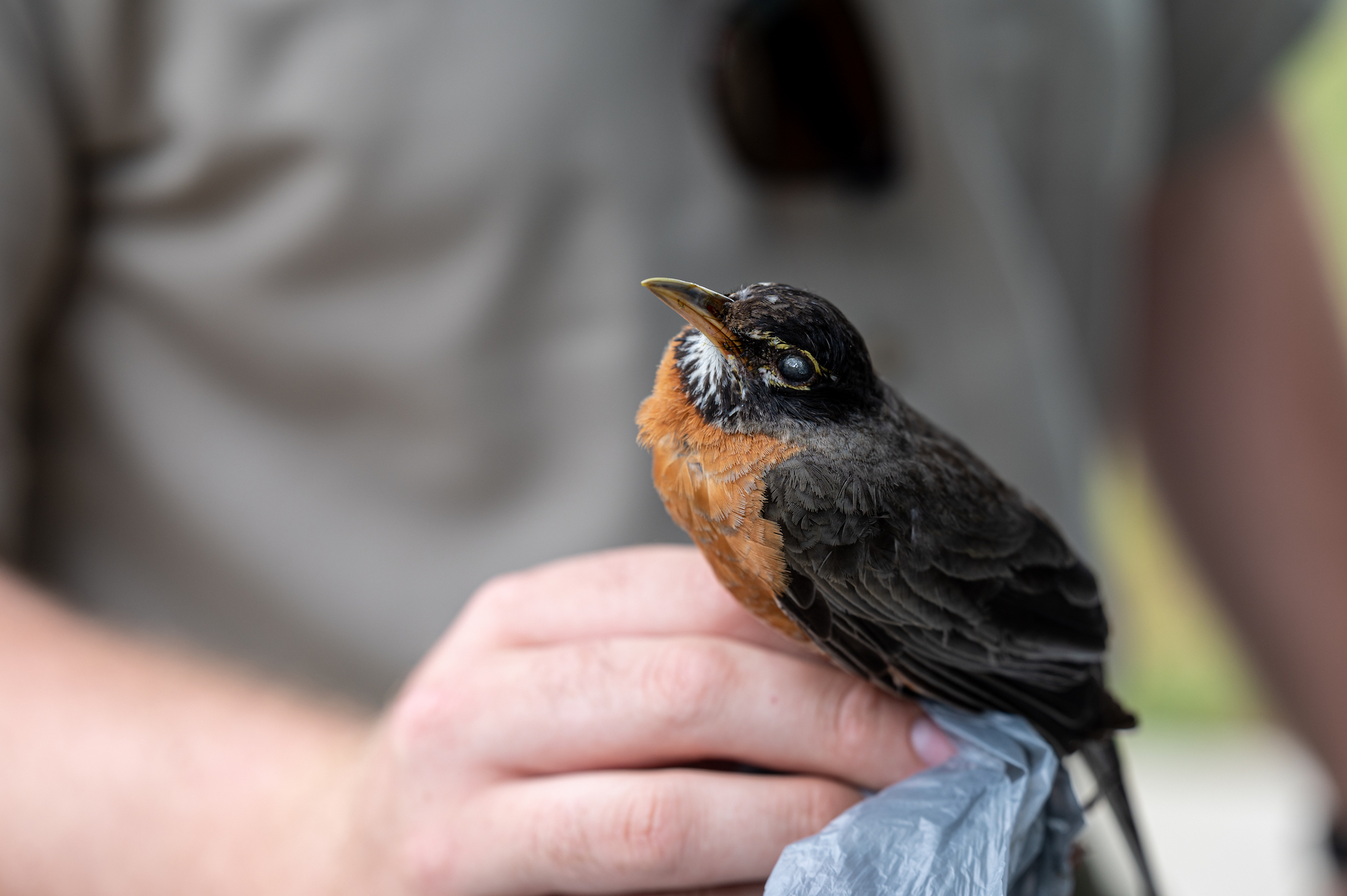
Unidentified songbird illness spreads to Eastern Pennsylvania
A variety of songbird species are being threatened by an unknown disease that’s spreading along the East Coast.
Wildlife rehabilitation centers around the Washington D.C. area are seeing an explosion of reports surrounding an unknown songbird illness that is now sweeping the East Coast of the United States.
Although the disease was initially found in areas of D.C., Virginia, West Virginia, Maryland, and Kentucky, June reports indicate that cases have been spreading north towards Eastern Pennsylvania, Delaware, Indiana, Ohio and South Jersey.
The most common species examined include American Robins, Common Grackles, Blue Jays, European Starlings, and other varied species of songbird. Most sick birds discovered are nestlings and fledglings.
Along the East Coast, many wildlife organizations have been simultaneously researching and gathering data on the mysterious illness, such as the U.S. Geological Statement National Wildlife Health Center, the University of Georgia Southeastern Cooperative Wildlife Disease Study, and the University of Pennsylvania Wildlife Futures Program — which studies birds specifically affected from six different regions of Pennsylvania.
Unlike typical avian illnesses, the birds affected by the disease tend to experience neurological disorders, such as paralysis and twitching. The state of their eyes are also an indicator of the illness, as they usually swell and begin to encrust as a result of infection.
The symptoms of the illness also appear to be unfamiliar to the region, causing researchers to consistently rule out possible diagnoses as to what could be the reason for the sudden surge in songbird deaths.
Additionally, many of the deceased birds found affected by the illness have been in poor condition, according to a statement from the University of Pennsylvania’s Wildlife Futures Program.
“Heat degradation, insect damage (maggots), and secondary predation has limited the number of usable specimens for analysis,” representatives released in a statement.
Despite the setbacks, the Pennsylvania Game Commission and Valley Forge Audubon Society have sent 30 birds from all six Pennsylvania regions to the Pennsylvania Animal Diagnostic Laboratory System, concluding that “West Nile Virus, and Newcastle Disease Virus have all been negative.”
These avian tests were local to Eastern Pennsylvania and Philadelphia, but the Cornell Lab of Ornithology, which specializes in the protection of wildlife and the pioneering of animal preservation technologies, also confirmed them.
They disclose that the culprit is not caused by “West Nile, Salmonella, avian influenza, House Finch eye disease, [or] Trichomonas parasites,” all of which are major bird diseases typically seen with the spread of viral bird infections.
RELATED CONTENT
Implementing laboratories alongside existing rehabilitation centers, and both national and local agencies have also been able to inform respective areas of the mysterious disease that impact songbirds in their vicinity.
The number of reported cases peaked in June, but the unidentified disease continues to expand throughout the Eastern states and demands precautions from residents along the East Coast.
The USGS National Wildlife Center recommends suspending the use of bird feeders in backyards and local parks.
They also recommend that bird baths be stored away or regularly disinfected with a 10% bleach and 90% water solution. Having these bird commodities only allows them to congregate with multiple birds on a feeder or in a bath at once, causing healthy birds to contract the illness that could have otherwise been avoided.
For human safety, the USGS suggests that residents keep their distance from the songbirds in their area and allow pets to have safe spaces without possible bird contamination.
There remains uncertainty about transmission, but the rate of infection is decreasing in Pennsylvania according to the Pennsylvania Game Commision.
Data confirms “fewer than twenty percent of the 2,982 reports submitted from Pennsylvania through the web portal between July 1, 2021, through July 22, 2021, have been identified as being potentially related to the songbird ‘mystery illness.’”
If a bird is found dead or sick, The Cornell Lab of Ornithology suggests to avoid handling unless necessary, and report the bird to a local wildlife conservation agency to receive more information on the specific case and keep record of the event.
In Eastern Pennsylvania, the Songbird Mortality Report Form from the Wildlife Futures Program is still being offered until at least Aug. 15.










LEAVE A COMMENT:
Join the discussion! Leave a comment.